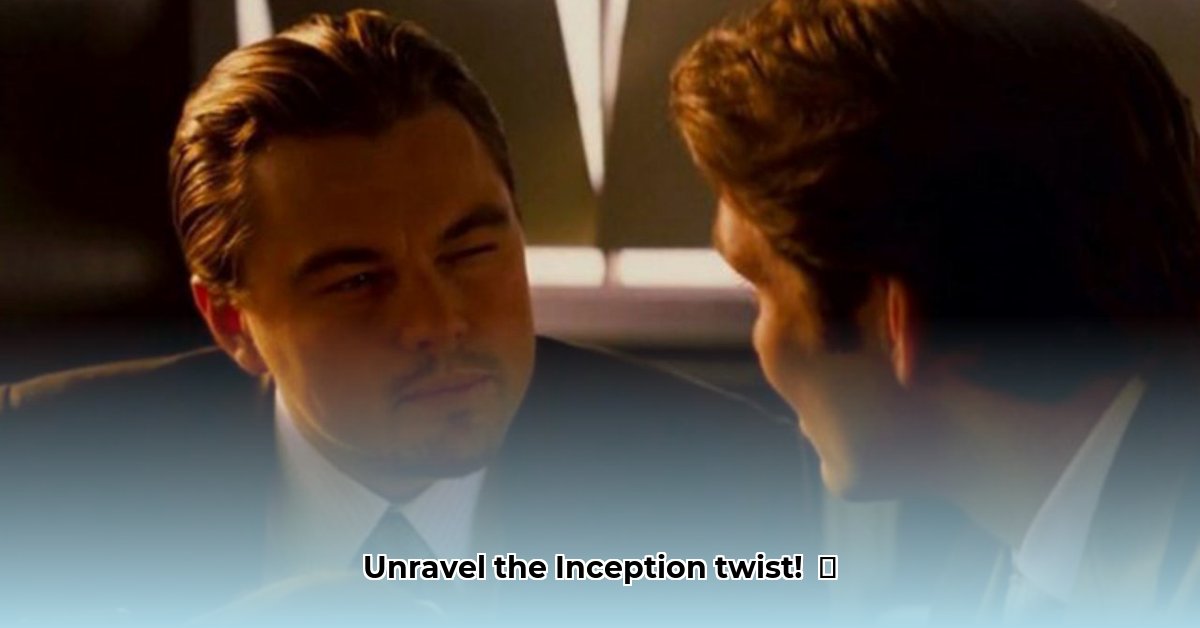
The Spinning Top: A Clever Reality Check, or Not?
Right, so you've seen Inception, hey? That ending, ou nogal, leaves you asking: was Dom Cobb dreaming, or was he finally back in the real world? The whole thing hinges on that spinning top, his totem (a personal object used to distinguish dream from reality). In a dream, it wobbles; in reality, it spins steadily. But the film cuts to black just as the top starts to wobble, leaving us hanging. This deliberate ambiguity is the movie's genius. Was it a masterstroke of filmmaking, or just a bit of a cop-out?
Unpacking Inception's Dream Mechanics
Before we dive into the interpretations, let's quickly refresh how Inception's dreams work. Think of them like layers of a cake, each representing a deeper level of the subconscious. The further down you go, the more distorted reality becomes – and time works differently in each level. Minutes in a deep dream could be hours in the real world. Crazy, right? It's like a Russian nesting doll of dreams, each with its own set of rules.
Here's a simplified breakdown of the dream levels:
| Dream Level | Time Distortion | Dream Intensity |
|---|---|---|
| Level 1 | Minimal | Relatively normal |
| Level 2 | Noticeable | Increasingly surreal |
| Level 3 | Significant | Reality bends visibly |
| Level 4 | Extreme | Reality is completely blurred |
Is it any wonder audiences are still debating this years later?
Multiple Interpretations: Which One Is "Right"?
Did that top keep spinning, or did it fall? Was Cobb awake, or still dreaming? There's no single "correct" answer. Director Christopher Nolan intentionally left it open to interpretation, reflecting the film’s core theme: the blurry line between what's real and what isn't.
The Still-Dreaming Interpretation: Some argue the top's continued wobble signifies Cobb remains trapped in a dream. This aligns with the film's consistent depiction of the uncertainty of knowing reality, and the suggestion that his dreams are almost impossible to distinguish from reality. After all, how could he even know if he was awake?
The Acceptance Interpretation: Others believe the fade-out represents Cobb accepting his situation. His happiness with his children overshadows the question of whether he's dreaming. Perhaps, in this case, the ambiguity isn't a puzzle, but a reflection of inner peace and contentment.
Michael Caine’s Insightful Hint: Adding another layer is Michael Caine's memorable line: "You wouldn't know, otherwise." He implies that only if Cobb is in reality wouldn't he be able to tell whether he were still dreaming.
So, which is it? The beauty of Inception lies in the fact that there's no definitive answer.
The Real Takeaway: It's About More Than Just the Top
Ultimately, Inception's ending isn’t just about the spinning top. It’s about Cobb's journey – facing his guilt, reconnecting with his children, and finding inner peace. This explains why the ending remains such a compelling, enduring topic of discussion. The movie’s ambiguity forces us to consider the nature of reality, and the importance of inner peace over the quest for definitive answers. It’s a film that continues to resonate long after the credits roll, prompting reflection and ongoing discussion.